Why the spring is the peak time for foxing
How to take action against these predators
Win CENS ProFlex DX5 earplugs worth £1,149 – enter here
What's the best rifle for foxing? How should you choose?
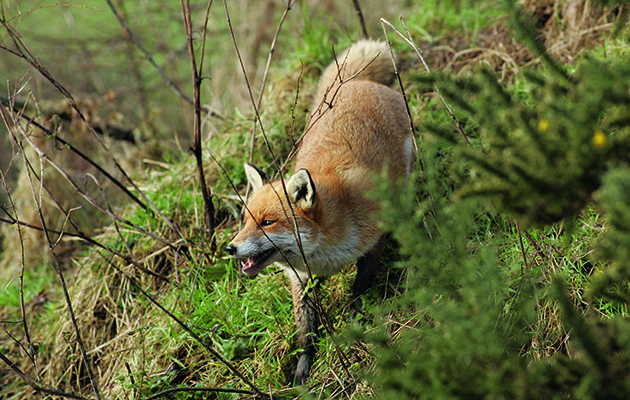 Fox
Usd 15 april 15 allerton
Fox
Usd 15 april 15 allerton
Your best rifle for shooting foxes is going to depend on whether you shoot from a truck or on foot.
If you’re going out on foot then you will need a lightweight set up supported by tripod sticks. But if you need to shoot over greater distances from a stable shooting platform like the roof or side of a truck then you’ll be looking at a heavier rifle.
The trick with foxing is to get in close and make sure of the shot. A missed fox will be very much wiser and very much more difficult to approach another time.
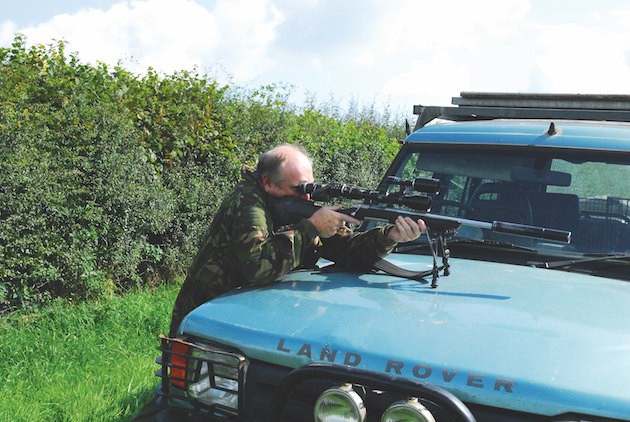
Choosing a foxing rifle
A single-shot rifle such as the Ruger No.1 is a useful choice for foxing because it is very easy to load, unload and make safe, even when you’re poking it over of window of a truck.
However you may prefer a bolt or lever-action rifle for shooting foxes. Make sure you know how to handle it safely and accurately. Of course you can consider a second-hand rifle too, which are often available at reasonable prices.
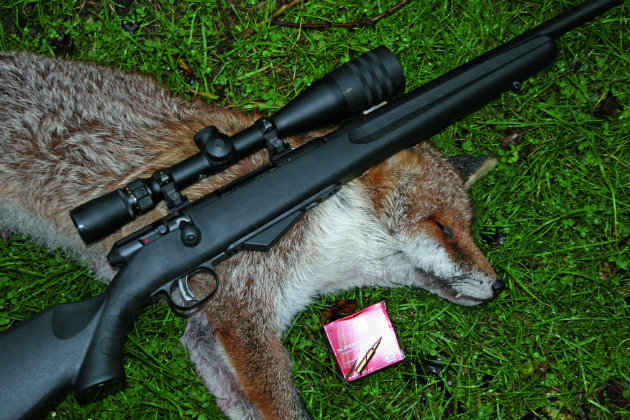
Shooting Times contributor Bruce Potts has used a Save Model 25 with .17 Hornet cartridge and Hornady 20-gr V-Max for foxes
New rifles start from about £500 and any modern rifle will be extremely accurate. However it is crucial to get a good telescopic sight and a set of quality mounts. Get the best you can afford.
Any accurate rifle chambered for .17 Remington (the centrefire cartridge, not the Hornady Magnum Rimfire), .22 Hornet, .222, .223, or .22-250 and loaded with suitable bullets, will kill foxes cleanly at any sensible range.
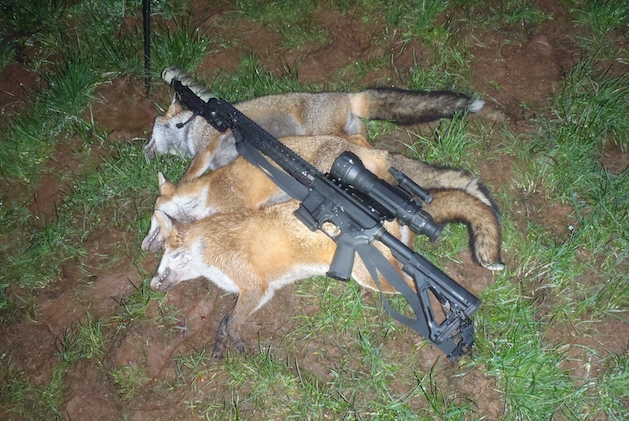
Every fox shooter will have his or her own views on what constitutes the best rifle for the job. This is a .223 in a custom pistol-grip stock on top of which is a dedicated night vision fitted with a laser illuminator.
There are, of course, all manner of other possible choices too, from the .17 centrefires up to full-on deer rifles. Although the various rimfire rifles will kill foxes, they are only suitable at short ranges.
If I was, for example, out using a .17 HMR for shooting bunnies and a fox presented a good shot at less than 50 yards, I’d not hesitate to shoot it, but if it was much further out than that I’d leave it alone.
In essence, most rifles can be divided into two groups by the thickness of their barrels. Some have thick profiles, whereas others have thin ones, with the former being much heavier than the latter. The reasoning for both goes like this:
Often labelled as ‘Varmint’ profiles, the increased diameter these barrels have provides more stability and allows you to fire more shots before heat warpage affects accuracy.
Usually referred to as ‘Sporter’ profiles, these are much lighter to carry around, and as you are highly unlikely to fire more than a few shots on any given night, heat issues can be ignored.
How to take action against these predators
Patrick’s top tips for tracking foxes • Do your best to keep the wind in your face as that way…
When examining a rifle from a weight perspective, it’s important to remember that what you pick up in a gun shop will be far lighter than what you eventually end up with. Good optics, for example, can be quite heavy. Add in the mounts, moderator, sling, a full magazine, and it will feel completely different. If you’re likely to use a bipod, factor that in too.
If night vision accuracy is a problem it’s usually caused by the mounts moving; quick-release ones are easily the worst culprits. I use triple-clamp Burris Tactical Extreme scope mounts. The extra weight they impart is minimal, but they simply don’t move.
A good 6x or possibly 8x scope is all that you need. The fox is not a large target, so keep the cross-hairs fairly fine.
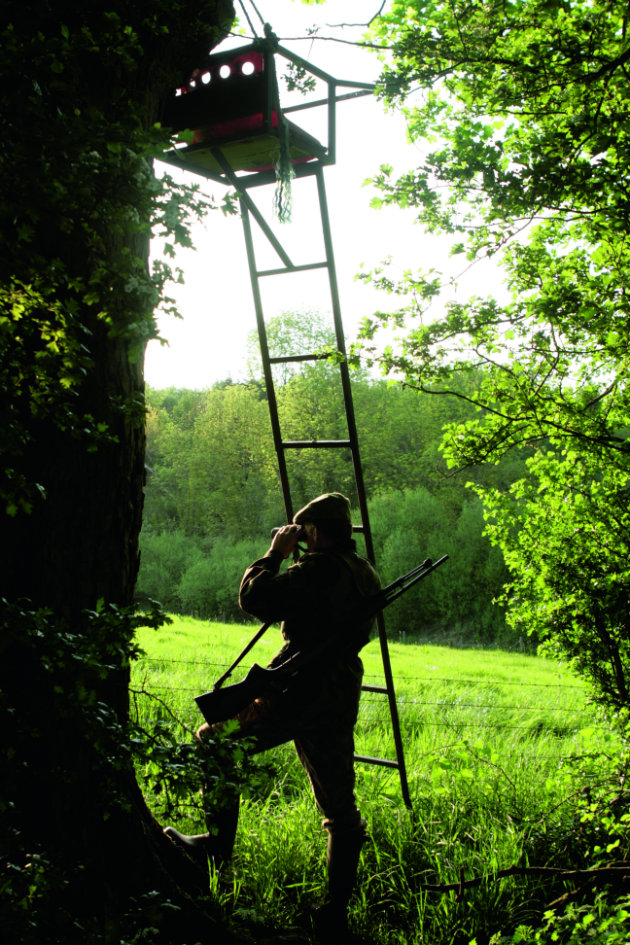
A high seat is useful if a fox earth is surrounded by high crops and will keep scent away from the fox
Q: Is there a minimum recommended calibre for a foxing rifle? I currently use a shotgun and I am planning to apply for a firearms certificate.
A: There is no legal minimum calibre requirement for shooting foxes, but I would recommend you buy a centrefire rifle and not a .22 rimfire. The .22 rimfire, even when loaded with superfast ammunition, doesn’t really have enough “oomph” to kill a fox cleanly.
Buy one of the more common calibres, such as the .223 or the .243 and you won’t go far wrong. There are plenty of good second-hand rifles on the market. Put in for a sound moderator at the same time as the rifle and buy as good a scope as you can afford.
Q: Why is there a low opinion of the .22 rimfire for fox control? I have taken numerous foxes at a range of 100 yards. The rimfire also has the advantage of causing less disturbance than a centrefire, and the reduced power makes it a safer rifle on the smaller pieces of land, particularly when lamping.
Q: Why have some people got such a down on the .22 Hornet as a fox control round? I have been using one satisfactorily for years.
Q: The Hornet was the first of the .22 centrefire rounds, dating back to the 1920s. The fact is that even the heaviest loadings will give you a bit over 700 ft/lb of muzzle energy at best, while a .223 gives 1,100 or better, and the 22-250 can easily top 1,500. In practical terms this means that the more modern centre-fire .22s considerably out-range the Hornet, and hit harder at closer ranges.
Get the latest news delivered direct to your door
Discover the ultimate companion for field sports enthusiasts with Shooting Times & Country Magazine, the UK’s leading weekly publication that has been at the forefront of shooting culture since 1882. Subscribers gain access to expert tips, comprehensive gear reviews, seasonal advice and a vibrant community of like-minded shooters.
Save on shop price when you subscribe with weekly issues featuring in-depth articles on gundog training, exclusive member offers and access to the digital back issue library. A Shooting Times & Country subscription is more than a magazine, don’t just read about the countryside; immerse yourself in its most authoritative and engaging publication.

